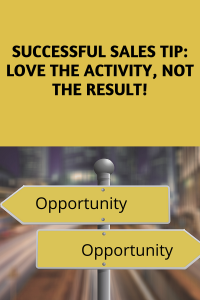Growing up, in Topeka, Kansas, there was a furniture store called “Crazy Bob’s Discount Furniture”. Every decent-sized city had one of these. You’d see the TV commercials with Crazy Bob telling you about how the prices were so low because he was “CRAZY!” Well, ol’ Bob finally decided to pull out all the stops and put on a “GOING OUT OF BUSINESS SALE!” Of course, you had to get the great buys RIGHT NOW because it would be GONE SOON! It took Crazy Bob five years to go out of business!
Scarcity Close
I thought of this the other day, clicking through my LinkedIn feed when I saw a long discussion about one of the oldest, most manipulative, and one of the most hackneyed (and well past retirement age) techniques: the “scarcity close”. You’ve probably heard it or seen it; it is based on the principle that there Just Isn’t Enough Supply of what you’re selling. So if you don’t BUY NOW, you might MISS OUT.
Apparently, based on the discussion, some salespeople still have some success with this approach. To me, it’s always seemed like “Crazy Bob’s Furniture Going Out of Business Sale”. The thread drew a number of salespeople commenting, as well as other sales authors and trainers, and (as usual) I was the contrarian in the group.
You see, here’s my philosophy on the “Scarcity close”. It’s designed to play on customer emotions – fear of missing out, fear of losing a once in a lifetime “deal,” and other anxiety-based emotions. To me, that’s not the right reason for a customer to buy.
I will also fully accept that scarcity does actually exist in some situations. For instance, when I bought my Harley, it was a used police motorcycle from Daytona Beach, Florida. That was important for a couple of reasons; first of all, it had a higher-performance engine than a standard Road King. And second, it had a special Mystique Green and Pearl White paint scheme that cop bikes around Kansas City didn’t have. When presented with this one bike at a good price, I chose to buy because I didn’t want to miss it. I’ve never regretted it.
Also, when I bought my first house in Topeka, it had some very specific characteristics that were hard to find in my budget at the time – so I moved fairly quickly.
What made both of those instances work, however, was that the SALESPERSON didn’t use a scarcity close. Instead, enough value had been built over the conversation that I recognized the value of the purchase. I also recognized that the opportunity wouldn’t be there forever, so I more or less closed myself. I never regretted either one, because I didn’t buy because of external pressure.
As a salesperson, I only had to use this close a few times before I recognized that smart customers could quite literally shove it down my throat. “So, what you’re saying is that, if I come in and want to buy this car on Monday instead of Saturday, you WON’T honor that price?” I stammered, knowing full well that we would, in fact, honor the price.
Or, there was, “So, if someone is going to buy that from you regardless, why do you care if it’s me? Why are you bothering to apply this pressure?” Again – stammering.
Here’s the truth. The “scarcity close” is designed to INJECT urgency into the buying process. The problem with that is simple. If that urgency doesn’t already exist, then the close you use won’t matter. A sale happens when need meets solution meets timing, plain and simple. If you’re having to use scarcity as a “buy now” tactic, you’ve missed something in the process that you can’t make up later. It smacks of desperation and people don’t buy from desperate salespeople.
The scarcity close – when it “works” – is a great instigator of buyer’s remorse, and can greatly harm your relationship going forward. Customers know when you’ve played their emotions and they don’t like it.
Like many cheap sales tactics, this is a “patch” for poor work early in the sale. My advice – do the work early. Ask great questions. Present to the needs. Truly understand your buyer, the buying process, and the timing thereof. And, the all-time greatest defense against needing to use these types of sales tactics, always keep your funnel full enough that you don’t NEED the next deal.


 think it is, perhaps a professional selling career isn’t for you. To be successful in sales, a sales call that doesn’t end in a sale is an opportunity to:
think it is, perhaps a professional selling career isn’t for you. To be successful in sales, a sales call that doesn’t end in a sale is an opportunity to: